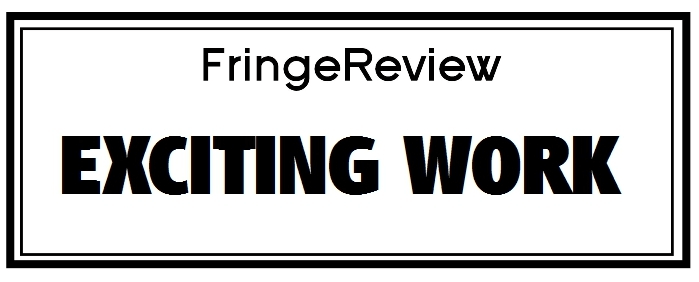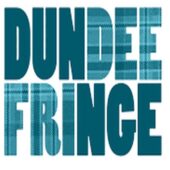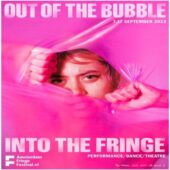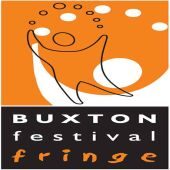FringeReview UK 2019
BBC Prom 46 Howell Elgar Knussen Weinberg
BBC Proms

Genre: Live Music, Music
Venue: Royal Albert Hall, Kensington
Festival: FringeReview UK
Low Down
Mirga Grazinyte-Tyla conducts the City of Birmingham Symphony Orchestra with Sheku Kanneh-Mason as soloist in the Elgar Cello Concerto, with works by Dorothy Howell Oliver Knussen, Mieczyslaw Weinberg
Review
Mirga Grazinyte-Tyla conducting the City of Birmingham Symphony Orchestra is an event keenly anticipated – with works by Dorothy Howell Oliver Knussen, Mieczyslaw Weinberg. As has Sheku Kanneh-Mason making his second appearance at the Proms as soloist in the Elgar Cello Concerto.
Dorothy Howell 1898-1982 should be as well-known as she used to be. Lamia is here receiving its centenary performance, but ut had one in 2010, and seven under its dedicatee Henry Wood who championed several of her works till 1940 when the Queen’s Hall was bombed out. Howell eschewed his advice and didn’t learn to conduct (a mistake, one feels), instead becoming a professor at the RCM from 1924-70. She never consolidated the success of this early score, her 1923 Piano Concerto recently revived shows she should have, and she turned to chamber music, piano works, increasingly of a pedagogical nature, and religion.
In part this is a memorial to Howell’s brother Charles who died ‘gruesomely’ we’re not told how, in Mesopotamia. Lamia was their favourite shared reading. Keats’ most Drydenesque poem from June 1819, after most of the Odes had been written (a double centenary then), it’s a sinewy, strange piece. It depicts a snake-woman turned into a woman by Apollo having fallen for a youth Lycius. He badgers her to wed when she just wants them to continue living together. At the wedding feast Lycius’ old tutor Apollonius calls her out as a ‘lamia’ and she shrieks and vanishes, whereupon Lycius kill himself.
Lamia though opens with rippled, individual wind motifs as characteristic as anything in say, Bax. It’s memorable and moves to an assured love-scene and climax. The main theme doesn’t quite unfold as memorably here, thought the subsequent scherzo depicting the wedding feast scintillates and the climax and denouement is beautifully done. And all written when Howell was 20, in 1918. Those subsequent works of Howell need rediscovering. Grazinyte-Tyla proves both persuasive and eloquent, her physical expressive conducting bringing forth a hypnotically watchable richness and expressivity to the orchestra too.
Having heard two of Kanneh-Mason’s siblings perform the Violin Sonata recently, what struck me and others was the almost unique way the soloists scaled their performance to the acoustic. Kanneh-Mason’s way with the Elgar is similarly both confiding and beautifully scaled. He digs into the opening chords like his hero Du Pré but there’s an alertness to orchestral texture and ambient sound that’s his own. He both takes risk in fast music, really pushing his tempi to edge-of-bow stuff, and yet plays chamber host to orchestral soloists, and in solo moments, plays out to us. His way with the scherzo then is breathlessly fast but always breathes; his soulful projection in the slow movement hat you could hope for. The finale is where extremes collide brilliantly. It’s a wonderfully fresh reassertion of what seems always to have been there.
True, Kanneh-Mason could play out more: up in the Gallery some playing was almost inaudible (cellos tend not to rise, unlike violins) and he as yet lacks Du Pré’s sheer heft and volume. But crucially like her and virtually no-one else he takes risks. Long may he do so. This is an evolving interpretation to watch out for. Everything slots seamlessly in synch with Grazinyte-Tyla and the orchestra.
Kanneh-Mason then played a beautifully-judged encore. The 18th of Mieczyslaw Weinberg’s 24 Preludes for Solo Cello. A darkly chromatic searching work as a prelude to the composer whose centenary the Proms celebrates with three works, the second of which follows on.
Oliver Knussen’s loss still aches over a year on. What he might have written had he not been so self-critical, such a workaholic, not just tireless champion of others; not so sadly ill as he visibly became, conducting sitting down for much of the past decade.
We celebrate though what he achieved, and here’s a characteristic chip; a reworking of the material in his second Maurice Sendak opera Higglety Pigglety Pop, from 1988-90. It’s an eight-minute extravaganza of delicacy. This ripples throught this miniature condensation of a miniature opera. Based on a requie for Sendak’s dog Jennie, the work compresses interludes from the opera into an envelope of ‘trauermusik’ mourning music at the opening and close, interspersed with the dog’s own dreaming and aria ‘Why am I longing?’ There’s a shiver of bright winds, scurrying strings, delicate horns from some infinitely scaled-down titanic imagination. And like a powerful dream itself it’s impossible to sequence, yet indelible after.
The final work marks the second time Weinberg (1919-1996) has been performed at the Proms. The first was his Cello Concerto just a week or so back. It’s an astonishing omission, but then so many things we think should have been performed haven’t been or only once recently. Weinberg though has only become available to us from the 1990s release and re-release of some of his 26 symphonies, 17 string quartets, Piano Quintet, piano sonatas and pieces, cello sonatas, and famously Leonid Kogan’s account of his Violin Concerto in G minor.
Weinberg escaped Warsaw with his sister who turned back with sore feet, only to be murdered alongside all Weinberg’s musical family by the Nazis in 1941. Weinberg eventually became Shostakovich’s pupil, then friend and collaborator, then influencer in turn. They tried to outdo each other in quarter composition. Weinberg developed markedly, and became like Shostakovich more refractive, and a composer of great power. His masterpiece is by his own admission the opera The Passenger, where a Holocaust survivor on a cruise ship spots her concentration-camp tormentor.
So describing the work tonight by one prommer nearby as ‘Shostakovich-lite’ after hearing a performance of Weinberg’s Symphony No. 3 I B minor Op 45 of 1948-50 (revised and finally performed 1959) its both a travesty and here, apt. Written at the time of the Zhadnov crackdown, when Shostakovich refused to write any symphony at all and retreated to quartets, it responds to Zhadnov in its sue of folk-music, here however crafted in melodic patterns and lyricisms that can have been written by no-one but Weinberg. The effect’s a bit like the seriously underrated symphonies of Malcolm Arnold, whose First and Second bracket Weinberg’s Third.
Lucid melodic lines, clear development, thewed with regret, these also point to something else; Shostakovich. His No. 10th dates from 1953 and though it takes from his own sardonically neo-classical No. 9 the heft and almost balletic lightness infusing his scores from now on are very different to say his previous works, in particular the monolithic No. 7 Leningrad an No. 8, but also even the more classically framed No. 6. Shostakovich’s subsequent symphonies with a film-score element in no. 11 aside, and songs predominant in 14, are lighter-textured, more graspable tighter entities. Shostakovich formally became Shostakovich-lite, but bother composers gained immeasurably in the density of their material.
Still, Zhadnov or his minions caused Weinberg either to withdraw his symphony or it was withdrawn for him. He in fact improved it significantly. The opening Allegro has much of the folksong-infused material beautifully laid-out as suggested. Its development is grippingly melodic and remarkably free of Russian murk; Weinberg after all is still Polish. But it’s powerful too and rises towards a climax and then drops into a mysterious Adagio coda, one of several revisions Weinberg visited on the score. The Allegro giocoso is another movement full of a scurrying warmth and underlying humanity. There’s little of Shostakovich’s snarl yet.
The Adagio though seemingly untroubled ends with a snarl of gathering brass from the shadows, and the pall of war and Shostakovich’s influence at last is felt after the gentle ripple of strings and woodwind that predominates. It’s clearly a moment Weinberg has prepared and lets us know is needed. The Allegro vivace of the finale isn’t quite as untroubled as that suggests either in its bras heroics and obligatory affirmations: a struggle to the light of B major is hard-won, thewed with cross-rhythms and bras blares from how many histories deep. Again this is the fruits of revision, the whole subjected to an overhaul of that heroic material. A Soviet artist’s response to just criticism? If it was, it was to invest in criticism of his own, an opportunity to make it far less what Zhadnov’s henchman would have approved of.
Everything here is both lucidly and energetically realized: Grazinyte-Tyla’s as persuasive as any conductor I’ve heard on record, and sadly that’s the only place where you can currently hear this composer. Still, his star’s been rising since before his death.
There’s so much else of Weinberg to explore. His Quartet No. 7 is due in a chamber concert on September 2nd. Olympia, Chandos Naxos and CPO have been championing his music, and much of it is available. Buy and paly and lobby. Weinberg’s a major composer, in flashes a great one, and with the very different reclusive and ultra-modernist Galina Ustolvskaya, born in the same year 1919 and dying in 2006, the Shostakovich pupil who took the master further.

































